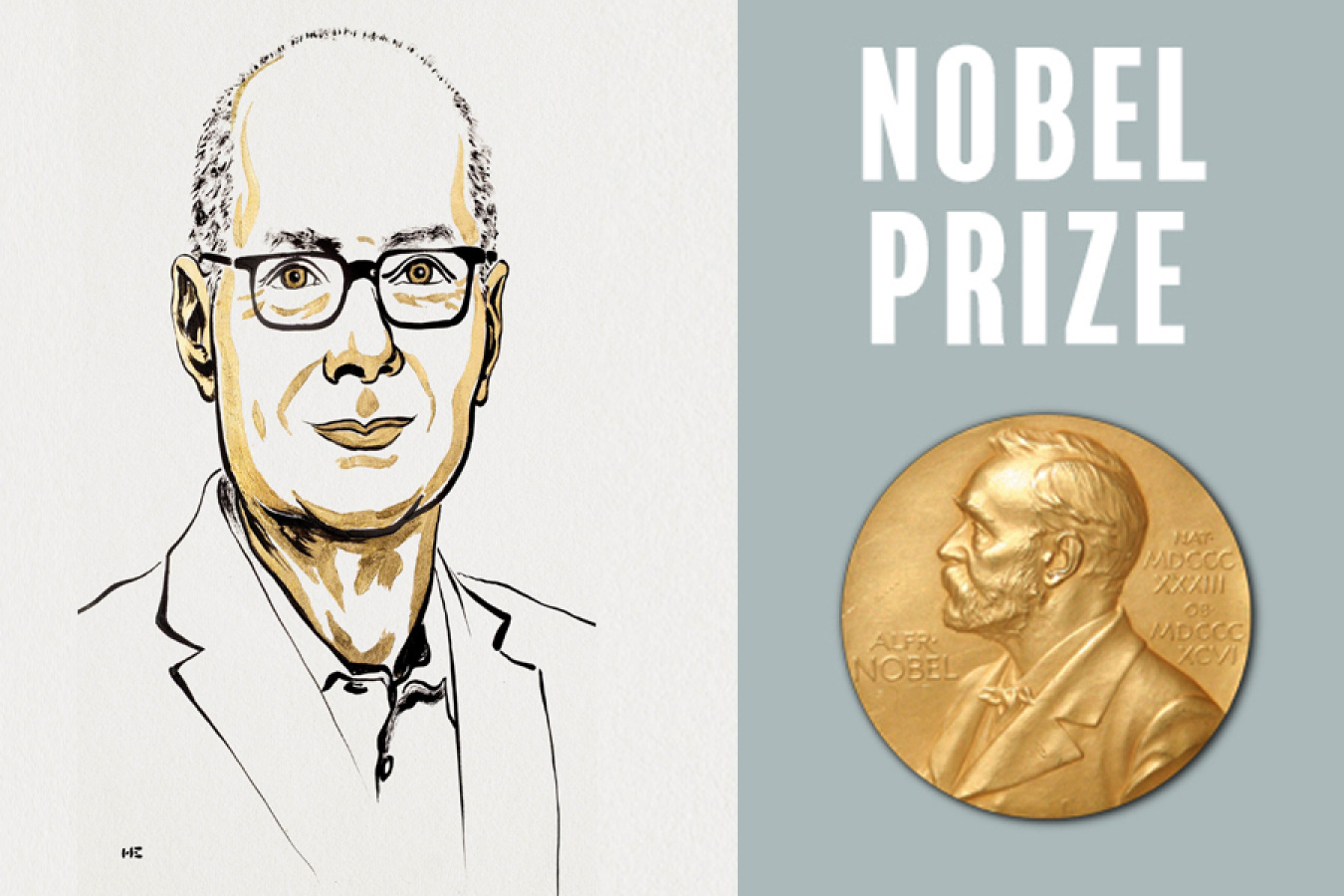Omar M. Yaghi, a chemist supported by the Department of Energy’s (DOE) Office of Science, has been awarded the 2025 Nobel Prize in Chemistry.
October 9, 2025Shannon Brescher Shea

Shannon Brescher Shea (shannon.shea@science.doe.gov) is the social media manager and senior writer/editor in the Office of Science’s Office of Communications and Public Affairs. She writes and curates content for the Office of Science’s Twitter and LinkedIn accounts as well as contributes to the Department of Energy’s overall social media accounts. In addition, she writes and edits feature stories covering the Office of Science’s discovery research and manages the Science Public Outreach Community (SPOC). Previously, she was a communications specialist in the Vehicle Technologies Office in the Office of Energy Efficiency and Renewable Energy. She began at the Energy Department in 2008 as a Presidential Management Fellow. In her free time, she enjoys bicycling, gardening, writing, volunteering, and parenting two awesome kids.
Omar M. Yaghi, a chemist supported by the Department of Energy’s (DOE) Office of Science, has been awarded the 2025 Nobel Prize in Chemistry. His award is “for the development of metal–organic frameworks,” along with Susumu Kitagawa of Japan and Richard Robson of Australia.
Because of their research, metal-organic frameworks (MOFs) now provide chemists with a powerful tool to facilitate and manage chemical reactions. MOFs can separate pollutants from water, capture water in deserts, and hold reactive gases. To date, chemists have developed tens of thousands of different MOFs, which have numerous potential applications.
“The Nobel Prize committee’s recognition of Omar M. Yaghi’s work demonstrates how discovery science supported by the Department of Energy lays the foundation for major technological advances,” said Darío Gil, DOE Under Secretary for Science. “Metal-organic frameworks have the potential to provide solutions to some of our greatest scientific challenges.”
Solving a Chemical Conundrum
Before the 1990s, chemists constructed most new molecules through trial and error. They would combine and heat chemicals to produce new molecules with a known formula. However, it was very hard to predict molecules’ chemical properties with this method. In addition, chemists wanted to create chemicals that could hold and release gases or liquids. But developing those materials required scientists to be able to reliably create consistent 3D structures with holes.
The path to developing MOFs provided a solution to both of those challenges.
In the 1980s, one of Yaghi’s co-recipients, Richard Robson, realized he might be able to use the ways atoms are inherently attracted to each other to predictably link up different types of molecules. Inspired by a molecular toolkit he was building for his chemistry students, he put together positively charged copper ions with a certain type of molecule. The molecule had four arms. Each of these arms had a chemical group at the end of it that was attracted to the copper. Driven by the attraction between the ions and molecules, the chemicals organized themselves. The result had a predictable crystalline structure with empty spaces inside of it. Robson published the first article on this structure in 1989. However, his molecules were unstable and not very practical.
Starting in 1992, Susumu Kitagawa built on this work in his research in Japan. He both built MOFs that could absorb and release different gases without changing shape as well as described what made MOFs unique.
From Library to Lab
At the same time as Kitagawa, Yaghi began tackling the same challenge from a different angle. He wanted a more consistent, predictable way to create molecules that didn’t produce unnecessary side-products.
Like many scientists, Yaghi’s love of chemistry was rooted in a formative childhood experience. Growing up in a single room with no running water or electricity, school was an outlet for his curiosity. One day, he took advantage of the unlocked school library and snuck in. Grabbing a random book off the shelf, he flipped through the pages. There, an illustration of chemical structures caught his eye. Even though he didn’t know what they were, he was hooked.
That initial spark of knowledge directed him towards research. When he was 15, he immigrated from Jordan to the United States to pursue his education. After graduating with a PhD in chemistry from the University of Illinois at Urbana-Champaign, he started as a research group leader at Arizona State University in 1992.
While at Arizona State, Yaghi imagined being able to connect different molecules together to make large crystals. Like Robson, he started by combining metal ions with organic molecules. In only a few years, his team had developed two net-like 2D materials held together with copper or cobalt. The cobalt ones were particularly promising – they were stable and could hold other molecules. In a 1995 article in Nature, he and his team coined the term metal-organic framework.
By 1999, Yaghi and his team had developed and presented the compound MOF-5. This structure is now used widely in the field of chemistry. What’s particularly amazing about MOF-5 is the amount of material it can hold. Only a few grams of it can absorb enough material to cover a soccer field! It is also very stable, even at temperatures higher than 500 degrees F.
This foundational discovery and others were made possible because of support from DOE’s Office of Science. The Basic Energy Sciences program began funding his lab in 1998.
Building Structures for Discovery
Since then, Yaghi has continued his work supported by DOE’s Office of Science. In 2002 and 2003, he and his team published articles in Nature and Science showing how it’s possible to modify MOFs to have specific properties.
Yaghi has also played important roles in the DOE Basic Energy Sciences community. He served as an early director of the Molecular Foundry, a DOE Office of Science user facility at Lawrence Berkeley National Laboratory. BES has also provided support for his work at the University of Michigan, the University of California, Los Angeles, and the University of California, Berkeley. His research has also used several beamlines at the Advanced Light Source, a DOE Office of Science user facility also at Berkeley Lab.
The Future of MOFs
The discoveries of Yaghi, Robson, and Kitagawa have opened the door to new opportunities in chemistry.
MOFs offer huge potential for storing gases, including hydrogen and carbon dioxide. Scientists also use them for chemical separation, purification, and catalysis. Chemists now have a set of building blocks to create new structures that can be used for a variety of different purposes.
Companies are beginning to produce MOFs on a mass scale. The electronics industry is starting to use MOFs to hold harmful gases used in the semiconductor production process. Others are looking into using MOFs to handle toxic gases from chemical weapons.
Driven by curiosity and the desire to improve a process, these Nobel winners found a new way to develop and work with molecules. The foundation laid by discovery science in the past has set the stage for a wave of advances in the future.



